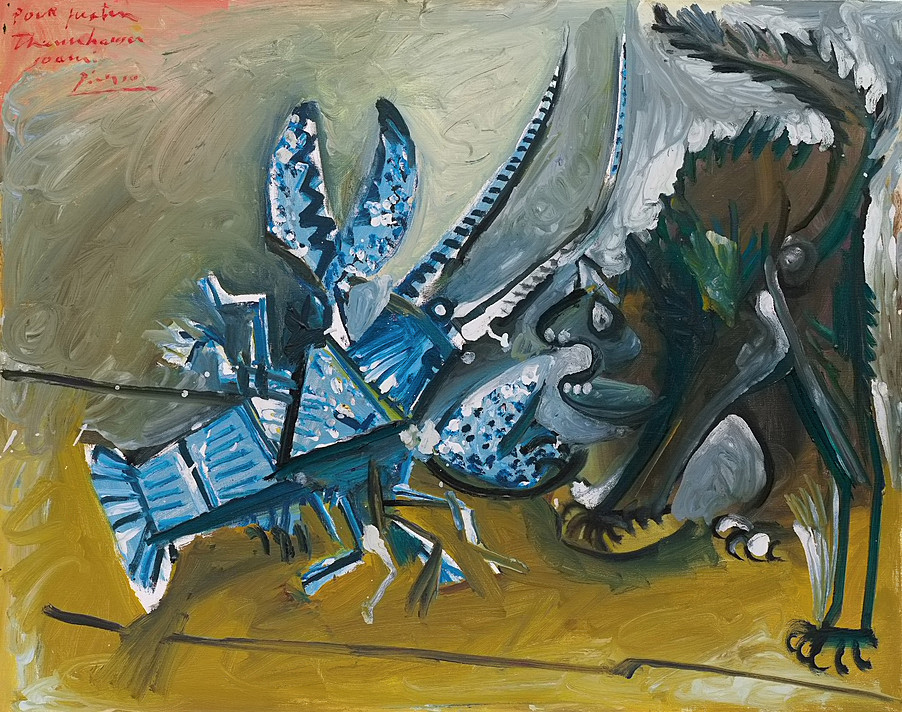art-Picasso.com
Pablo Picasso 1881-1973
©Pablo Picasso - 1965 Lobster and Cat
 1965 Lobster and Cat |
From Solomon R. Guggenheim Museum, New York:
The latest of Pablo Picasso’s works in the Guggenheim’s Thannhauser Collection, Lobster and Cat attests to the artist’s unbroken creative energy during the last years of his life. The painting demonstrates Picasso’s ability to derive serious implications from what is essentially humorous. The subject of the lobster and cat refers to one of the most beloved paintings of French art, Jean-Baptiste-Siméon Chardin’s The Ray (1728, Musée du Louvre, Paris). In both paintings, a cat is aroused to vicious hissing by the menacing aspect of an item of seafood that is as delicious to the palate as it is horrendous to the eye.
What is so astonishing in Picasso’s painting is that he is able to retain the humorously anecdotal premise of the eighteenth-century genre painting while simultaneously heightening the encounter between cat and lobster into a miniature but extremely effective metaphor of aggression aroused by fear. It is a theme that preoccupied Picasso. If one makes all due allowances for the differences between the categories of miniature and monumental expression, it is a theme that also occurs in Picasso’s great mural Guernica (1937, Reina Sofía, Madrid). The comparison strikes an absurd note until one remembers Picasso’s frequent shifts from monumental to miniature, from trifling to significant and back again. These ostensibly erratic whimsicalities aim at an ironic demonstration of the artificial conventions of our thought and of our feelings. Here again, as in Lobster and Cat and in so much of Picasso’s work, it is impossible to think of Guernica’s bull or horse as being either all good or all evil, so is it impossible (on quite a different level of seriousness, of course) to come to a clear decision regarding the lobster and the cat in the Thannhauser painting. Both animals are potentially as innocent as they are dangerous.
Fred Licht